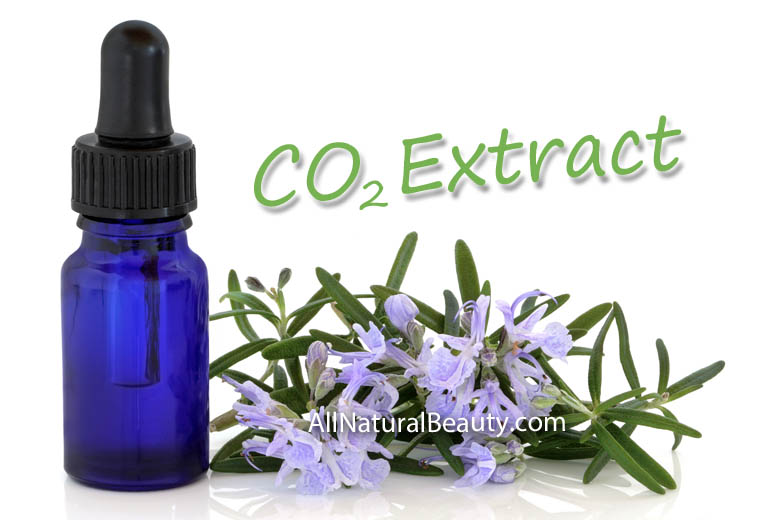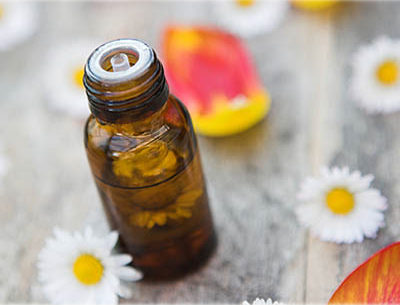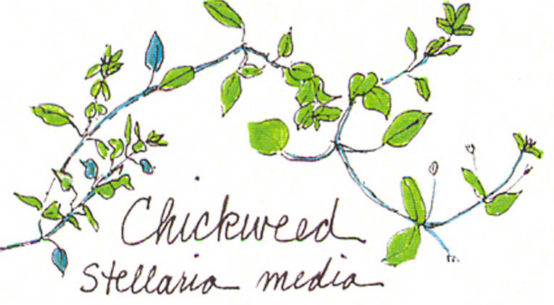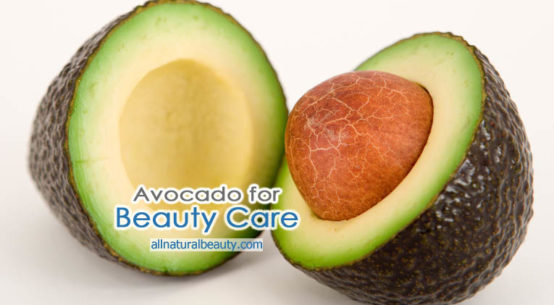
Synopsis: An ambitious discussion of the essential oil of the grass Vetivert from the rootlets, its uses, growth, description, organoleptic qualities and uses of the essential oil.

Common Name/Latin Binomial: Vetiver or Vetivert is Chrysopogon zizanioides. Vetiver is the plant and Vetivert is the essential oil of the plant.
Other Common Name/Naming Information: On the basis of similar genetic analysis of related genera such as Chrysopogon and Sorghum, a new taxonomy was proposed by Veldkamp, who combined Chrysopogon zizanioides and Vetiveria zizanioides under the unique denomination Chrysopogon zizanioides L. Roberty. the former term, Vetiveria zizanioides, however, is still widely used in the current literature.
“Vetiver belongs to the same part of the grass family as maize, sorghum, sugarcane, and lemongrass. Its botanic name, Vetiveria zizanioides (Linn) Nash, has had a checkered history—at least 11 other names in 4 different genera have been employed in the past. The generic name comes from “vetiver,” a Tamil word meaning “root that is dug up.” The specific name zizanioides (often misspelled zizanoides) was given first by the great Swedish taxonomist Carolus Linnaeus in 1771. It means “by the riverside”, and reflects the fact that the plant is commonly found along waterways in India.” — https://www.nap.edu/read/2077/chapter/7
Family: From the grass family Poaceae. Poaceae or Gramineae is a large and nearly ubiquitous family of monocotyledonous flowering plants known as grasses. The term Poaceae is derived from the Ancient Greek for fodder
Essential Oil Plants of the Grass Family ~ Gramineae (Poaceae).
Chrysopogon zizanioides is commonly known as Vetiver, a bunch grass whose roots are used.
Cymbopogon citratus West Indian Lemongrass;
Cymbopogon flexuosus is East Indian Lemongrass
Cymbopogon martini var. motia is Palmarosa grass, syn. Andropogon martini or Cymbopogon martinii.
Cymbopogon martinii var. sofia is Gingergrass
Cymbopogon nardus is Citronella grass.
Countries of Origins: Haiti, Java, Brazil, China, Madagascar, Japan and La Réunion and India for the Khus variety.
Eden Botanicals Harvest Location: Haiti and Sri Lanka with both organically-grown and cultivated types grown.
Endangered or Not: The annual world trade in Vetivert oil is estimated to be approximately 250 tons with Brazil, China, Haiti, India, Japan, Java, and Reunion being the main producers. Europe, India, Japan, and the United States are the main consumers.
Vetivert – The plant does not seem to be endangered although there is fear that consumers will mistakenly order the fertile plant over the internet and introduce it to a place where it may overrun.
General description of Plant habitat and growth: There are about 50 species of Chrysopogon of which only one is used in aromatherapy and that species zizanioides has two main types, a fertile one and a sterile one. This is a perennial grass with very fragrant long rhizomatous roots, growing to six feet high.
“It is important to realize that Vetiver comes in two types — this is a crucial point because only one of them is suitable for use around the world. If the wrong one is planted, it may spread and produce problems for farmers.
A wild type from North India known as Khus or Vetiver. This is the original undomesticated species. It flowers regularly, sets fertile seed, and is known as a “colonizer.” Its rooting tends to be shallow, especially in the damp ground it seems to prefer. If loosed on the world, it might become a weed.
A “domesticated” type from South India. This is the Vetiver that has existed under cultivation for centuries and is widely distributed throughout the tropics. It is probably a man-made selection from the wild type. It is nonflowering, does not seed (or at least is non-spreading), and must be replicated by vegetative propagation. It is the only safe type to use for erosion control.” — https://www.nap.edu/read/2077/chapter/7
It southern cultivar is a densely tufted, perennial grass that is considered sterile outside its natural habitat. It flowers but sets no seeds. It is a lawn grass in the tropics, however, when eaten the sharp calluses on the lemma can pierce an animals stomach. (The Lemma is a morphological term used in botany and refers to a part of the spikelet of grasses (Poaceae). It is the lowermost of two chaff-like bracts enclosing the grass floret. It often bears a long bristle called an awn, and may be similar in form to the glumes – chaffy bracts at the base of each spikelet.
Vetiver can grow up to (5 ft.) high and form clumps as wide. The stems are tall and the leaves are long, thin, and rather rigid. The flowers are brownish-purple. Unlike most grasses, which form horizontally spreading, mat-like root systems, vetiver’s roots grow downward, 7 ft. to 13 ft. in depth.
Vetiver is the best plant in the world to stop erosion and repair damaged land from erosion. Once permanent Vetiver rows are established the roots should never be dug up. The aromatic roots have been used since ancient times in India. The fragrant, insect-repelling roots yield oil, which is valuable in the perfume industry. Traditionally, these roots were woven into mats, fans and fragrant screens, while the tops of the grass were used for thatch, mulch, handicraft, fodder and animal bedding.
Portion of the plant used in distillation, how distilled, extraction methods and yields: In Haiti, January and February are the high season for picking and distilling the Vetiver roots. The roots of Vetiver are picked, washed, comminuted (chopped), dried, and macerated (soaked) in the distillation water, before being steam distilled.
Yield: 0.5%.
Vetiver/Vetivert – The quality of the oil depends on the age of the roots and the length of distillation ~ from 12-36 hours. Distillation studies on vetiver (Vetiveria zizanioides) in northern India during 1987 to 1991, demonstrated that maximum oil content was associated with freshly harvested roots and that extractable oil decreased with delays in harvest and storage period.
Organoleptic Characteristics:
Color …………………. Depending on source, it is honey colored to a caramel brown
Clarity ………………… The lighter the color the more it is clear, the darker then semi-opaque
Viscosity ……………. Viscous to very viscous and thick like molasses
Intensity of odor … 4-6 (often the darker the color the more intense is the odor)
The guide to gauge the Intensity of odor ~ On a scale of 1-10, Lemon is on the low end about 2, while Peppermint is about 7-8. There are Lavenders that run the gamut from 1-9. However, Vetivert is often not very intense and softens with use in a perfume.
Taste ……………………. A burning bitter aromatic flavor, a smoky scent that rises up the throat.
Odor Description/ Aroma Assessment: In general, the odor of this EO is very distinctive, yet when compared with one another there are definite differences. The newer samples of Vetivert are lighter in color and the lighter the color the less intense and less complex is the odor. As you can see from the above illustration, color varies from pale yellow to very dark brown. Color is removed from the oil because perfume makers do not like color. Personally, I prefer the deep rich intense scent of the original Vetivert types with the rich dark color for my perfumery classes.
Vetivert when double-distilled has an earthy, green tenacious character with sweet wood quality. During re-distillation, a small fraction of the constituents is removed, thus removing some of the therapeutic quality and other Vetivert oils are recommended when therapy is required.
Vetivert oil is a viscous amber-colored oil with a characteristic rooty, precious-woody odor of great tenacity. It is olfactorily dominated by a complex mixture of oxygenated sesquiterpenes. Has a persistent green-woody note and can be soft, woody-fruity when used with Patchouli, Sandalwood, Jasmine.
Vetivert double-distilled from Haiti is a light-colored EO, clear, medium viscosity and the scent is woody, green and slightly fruity odor, with less definable complexity. Because of its lack of color, it is often preferred in a perfume.
Vetivert organically grown from Haiti is a clear oil with a nice yellow color. It is strongly herbaceous and earth with a woody and even spicy note.
I am very fond of the Vetivert from Java with its deep brown color, semi-opaque, and viscous. The scent is woody, green with a floral and herbal back note. This very complex oil will indeed make your perfumes brown but upon dilution the scent smoothens out. It is wonderful with Rose or jasmine and Patchouly to make deep rich grounding odors that are sometimes
Solubility ……………………… 1-2 volumes of 80% alcohol
Specific Gravity ……………. 0.984 – 1.035 @ 25° C
Optical Rotation …………. Varies from +14° to + 37°
Refractive Index at 20° … 1.515 1.530
Vetivert Oil. Chemical Components: There is great variety in the GC/MS of Vetivert but the one that I have seen is Vetiverol up to 50%, Vetivol up to 10%, terpenes like Vetivene up to 20%, and phenols up to 11%, Furfural, and Sesquiterpenes.
Two main chemotypes of the C. zizanioides species can be found: the ‘typical’ vetiver that is widespread all over the world and especially in Haiti, Java, Brazil, China, Madagascar, Japan and La Réunion. This produces an essential oil containing mainly zizaane, vetivane, eremophilane and eudesmane derivatives. The essential oils prepared industrially for the perfumery world market come exclusively from this variety.
On the other hand, ‘Khus’ oil another chemotype, is distinguished from the typical C. zizanioides by high amounts of cadinane derivatives, such as khusinol and especially khusilal. Khus oil is also devoid of the vetivones, characteristic of the ‘typical’ samples.
General Properties: (by IG=ingestion or IN=inhalation or AP=application):
Application: Fixative in perfumery, stimulant, humectant, antiseptic, tonic, immuno-stimulant, emmenagogue, antispasmodic, sedative, and antiparasitic.
Ingestion: It is not taken internally.
Inhalation: Stimulant, immuno-stimulant, calmative, some think it has emmenagogue properties, sedative, and nervine.
Application: Vetivert is used as a fixative in perfumery. When used in massage oil it is good for the circulation. It is used in lotions for aching joints, arthritis, or rheumatism. It is a circulatory tonic and it can alleviate menstrual problems. Specifically, it is said to promote and regulate menstrual flow and alleviates cramping.
Application/ Skincare: It is moisturizing and humectant for dry skin. So, it is used in skin care on dry, irritated, mature, or aging skin. Vetivert EO is useful in lotions to assist in skin hydration, if used with Lemon oil to help even out the color of the skin, and when used regularly will help to reveal smoother, better-looking complexion. The EO is useful in anti-aging creams and lotions, especially with Frankincense EO.
Exfoliation is just like peeling the skin off an onion. Dead cells are removed with scrubs, masks, or acid peels, revealing the younger, smoother layer of skin beneath. Exfoliate with ground coffee, ground almonds, ground walnuts, ground oats or a combination of these with hydrosols to hydrate and essential oils to treat. Essential oils should be gentle such as Owyhee, Roman Chamomile, Sandalwood, Rose, and Vetivert.
I am particularly fond of ¼ cup ground Almonds with enough Roman Chamomile or Rose hydrosol to moisten and a drop of Vetivert. Mix together, apply to clean moist face and gently massage in with circular motions. Let it sit while you shower and then gently rinse off.
Mix together 20 drops Grapefruit – white, + 10 drops Rosewood + 5 drops Vetivert.
Shake vigorously and apply by massage to any painful spots on your body.
Perfumery ~ Vetiver grass roots contain an essential oil and used with other tropical odors is considered a high-class perfume. Copper plate inscriptions have been found that list the perfume (probably as a maceration) as one of the articles used by royalty. Vetivert oil is one of the ingredients in Chanel No. 5. The famous French perfume was introduced in 1921 and is still in production. Vetivert oil is contained in 90% of all western perfumes and its greatest use is in modern perfume creations. Vetivert oil is estimated to be approximately 250 tons per year in world trade. The herb has been known in India since ancient times.
Diffuse/Diffusion: Vetivert can be diffused if you mix it with other essential oils, specifically those that are less viscous such as the Lavenders or citrus odors. It makes a very warm grounding odor that helps calm a household.
Emotional/Energetic Use: In folklore, Vetivert oil is used to increase financial abundance. In more common ritual, inhaling the oil is said to protect the body from menacing energies, including physical illness. Vetiver is employed in massage and aromatherapy for its grounding influence, to calm the central nervous system of one who feels “uprooted.”
Emotional Uses (AP or IN):
Inhalation: “The scent is calming and sedating, used for comforting and for people who feel ‘uprooted’ or without stability. It affects the parathyroid glands” — 375 Essential Oils and Hydrosols, p. 147. It also alleviates stress, tension, and nervous tension.
Vetivert is also a good grounding oil for those who focus on intellectual activities to the exclusion of the physical, the herb added to the bath for an exceptional stress-relieving soak, and to inhale in the case of shock due to, for example, an accident, loss of employment, bereavement, separation, or divorce.
Make a formula 20 drops Rosewood + 10 drops Palmarosa + 3 drops Vetivert.
Mix it together and use by inhalation or add to 70 drops (2 ml +) of a carrier oil.
Apply to wrists with intention and inhale.
Key Use: Oil of Depression and the immune system or Oil of Tranquility.
Depending on the country where used, this plant when distilled is used in perfumery and if dried used as potpourri and bug repellent.
~ ~ ~ ~ ~ ~ ~ ~ ~ ~ ~
I collected the oil of this plant for 30 years, from various company lists. Didn’t like the odor so kept the oil and let it gracefully age on my shelves. This is one of the major essential oils that can age gracefully for many years. I have stock from 1983 and after. I have stock from a company now long gone that has added synthetics. Why this was the case, I do not know as it is a relatively inexpensive essential oil.
For all these years, I was not that fond of Vetivert essential oil although I really loved the Vetiver fans and fragrant baskets that were made with the roots. I tried to like the scent but was not successful using it in perfumes or blends. It took my friend, Marianne Griffeth, of Prima Fleur Botanicals, to teach me to love it via her ability to make successful and fragrant blends using Vetivert. Her blends were always warm and delicious smelling ~ she talked about it so much that I began to try to use Vetivert oil. I have been getting better and better and am now truly loving the scent. I like to use the less intense oils that I have obtained from Eden Botanicals but also love the deep, dark Vetivert I get from Prima Fleur Botanicals.
Recently, I took 1 tablespoon of plain unscented cleansing cream and added 1-drop of Vetivert oil and massaged on my clean face and then let it sit for a few hours before I washed it off with warm water. This was a very pleasant experience and my face looked dewy soft.
Blends Best with: Cassie, Cedarwood, Cinnamon, Clary Sage, Clove, Chocolate Absolute, Coffee Bean, Frankincense, Galbanum, Geranium, Grapefruit, Jasmine, Lavender, Oakmoss, Patchouli, Rose, Sandalwood, Tobacco Absolute, Violet Leaf, Ylang Ylang and citrus and other rich long-lived scents.
Blending with formula ~ When making perfumes, always mix your oils together and then shake them via succussion [Succussion – to fling up from below] to make a synergy. Let them age. Add more oil if needed. Age. Then add the carrier. Alcohol is not usually added to a Chypre type scent.
These are made with a top note, heart or body note and base or fixative note plus bridges if needed.
Top Note – 8 drops Clary Sage flower
Heart Note – 3 drops Cypress berry + 3 drops Grapefruit peel + 2 drops Petitgrain leaf
+ 2 drops Petitgrain leaf
Base Note – 4 drops Vetivert root + 2 drops Oakmoss
Fixative Note – 1 drop Labdanum resin
Mix these essential oils together, let them age for a few weeks. Smell, adjust ingredients if necessary. Dilute with oil, or alcohol and age again before using.
Bergamot peel – 40 (dark green)
Vanilla abs – 20
Balsam of Tolu – 10 (pre-dilute 50•50 with grape spirits)
Vetivert roots – 5
Mix – wait – add Cane or Grape spirits – wait – filter if necessary – wait – Use.
Mix in any combination, start with 5 drops of each, smell, analyze
and add more or less of whatever you like.
Cocoa (Chocolate) Abs
Tobacco Abs
Vetivert EO
Vanilla Abs
HERBAL USES: Varieties of this plant are grown throughout the tropics and used to thatch roofs or as a terracing plant. The roots of this grass acquire a soft almost sandalwood like odor when dried. If these plants are kept moist and laid about the house, they help to keep bugs and moths out. And these dried roots are one of the best fixatives for dry potpourri as they blend well with Rose scent. Theses roots can be used in bath herbs, powdered for sachet or drunk as a tonic or stimulant tea. — Herbs & Things, Jeanne Rose’s Herbal, p. 112.
Sometimes the roots are cleaned and used for brushes, for window screens (when wetted, will cool the house as the wind blows through), fans, mats and baskets and the chemical constituents of zizanol and epizizanol are insect repellents.
HYDROSOL: To date I have not had the opportunity to try a Vetiver hydrosol.
PLEASE NOTE: A true hydrosol should be specifically distilled for the hydrosol, not as a co-product or even a by-product of essential oil distillation. The plant’s cellular water has many components most are lost under pressurized short steam runs for essential oil, or by using dried material. We recommend that the producers specifically distill for a product by using plant material that is fresh.
Historical Uses: Historically used in perfumery while the herb is woven or used in mats to fragrance the air.
Interesting Information: One type is called Khus-Khus. The roots are used to make fragrant fans and screens, which give off a refreshing, clean scent when dampened. “The roots are interwoven with flower matting, window coverings, etc. giving rooms a fragrance and deterring insects. The oil is used in chypre (green, earthy) and oriental type perfumes, and soaps, toiletries, etc. Growing the plant protects against soil erosion” essential aromatherapy, p. 170.
Key Use: Depression and the immune system. Oil of Tranquility.
Contraindications: There do not seem to be any contraindications for the use of Vetiver plant in its use as blinds nor for the essential oil in perfumery or aromatherapy.
Do not Ingest essential oils: Although some oils are important flavoring oils in the flavor industry and thus ingested in very small amounts in many foods, especially meats and sausages, it is not a good idea to use them yourself either in capsules or in honey to take internally.
Safety Precautions: Do not apply the essential oil neat, especially to the underarms or delicate parts of the body. Most oils are probably not to be used on babies, children or pregnant women. Many aromatherapist suggest that there are some oils not be used at all. However, as with many plants, essential oil chemistry is subject to change depending on species and terroir.
Patch Test: If applying a new essential oil to your skin always perform a patch test to the inner arm (after you have diluted the EO in a vegetable carrier oil). —Wash an area of your forearm about the size of a quarter and dry carefully. Apply a diluted drop (1 drop EO + 1 drop carrier) to the area. Then apply a loose Band-Aid and wait 24 hours. If there is no reaction, then go ahead and use the oil in your formulas. —The Aromatherapy Book, Applications & Inhalations, p. 64
DISCLAIMER: This work is intended for informational purposes only and is not a substitute for accurate diagnosis and treatment by a qualified health care professional. Dosages are often not given, as that is a matter between you and your health care provider. The author is neither a chemist nor a medical doctor. The content herein is the product of research and personal and practical experience. Institute of Aromatic & Herbal Studies – Jeanne Rose©
Mix together equal parts of Patchouli leaves (upon which you have sprayed a bit of Patchouli oil), Vetivert roots, Linden flowers, and Comfrey leaf. Mix this all together. For a great bath, use at least 4 oz.by volume of the mixture. Add to a quart of water, and simmer gently for 10 minutes, then pour the liquid into your bath and the herbal matter into a gauze bag. Tie off the bag and throw into the tub. The Patchouli is rejuvenating for the senses, the Vetiver is a tonic stimulant and beneficial to healthy skin tone, and the Comfrey regenerates aging skin.
This is a great combination for men. —from Jeanne Rose Herbal Body Book, p. 301.
Chypre (sheepre) scents were invented in France and used in the 16th and 17th Century and were made up of various herbal powders and resins. See Red Chypre as an example of that time. And they are non-alcoholic perfumes that contain a variety of oils and resins. The true traditional formula was one composed of Oakmoss, Labdanum, Jasmine, Patchouli and Bergamot with animal notes of civet and musk with Vetivert often added. These are often composed on the contrasts between Bergamot and Oakmoss and will often include Patchouli and citrus odors. These scents are good on brunettes and for most men except those men who are very fair, pale or blonde. Aromatics Elixir, MaGriffe and Paloma Picasso are examples of Chypre scent for women.
Potpourris and Sachets are usually made of three main ingredients: (not EO) the main plant for its scent and color; the essential scent in EO Perfumes, the blender plant scent and the fixative plant scent, which are usually resins and base notes.
Scent your basic herbs and resins with their own essential oil and age before using them in the final construction.
Remember that Potpourri ingredients are generally left in whole form so that the form of the plants is still identifiable (with fixative ingredients in powder form) while Sachet ingredients are all comminuted and/or powdered form.
8 oz. Orange flowers WH (whole)
4 oz. Spearmint WH
3 oz. Coriander seeds, crushed
2 oz. Calamus CS (cut & sifted)
2 oz. Vetiver roots CS
1 oz. Oakmoss CS
1 oz. Benzoin resin, crushed
Add some cotton balls or tips of Q-tips scented with Bergamot and Vetivert oil.
Mix this all together and age in a covered light-proof container. Occasionally, open the top of the container and let the lovely potpourri scent the room.
References
Guenther, Ernest. The Essential Oils. Published by Krieger.
Herbal Studies Course/ Jeanne Rose & Berkeley, California: North Atlantic Books, 1992
http://haitireconstruction.ning.com/page/growing-vetiver-for-essential
http://www.bojensen.net/EssentialOilsEng/EssentialOils.htm
https://plants.usda.gov/plantguide/pdf/pg_chzi.pdf
https://www.nap.edu/read/2077/chapter/7
Mabberley, D. J. Mabberley’s Plant-Book, 3rd edition, 2014 printing, Cambridge University Press.
Rose, Jeanne. 375 Essential Oils and Hydrosols. Berkeley, California: Frog, Ltd., 1999
Rose, Jeanne. The Aromatherapy Book: Applications & Inhalations. San Francisco, California:
Rose, Jeanne. Herbs & Things. San Francisco, CA. 2009
Rose, Jeanne. Natural Botanical Perfumery Workbook. Available at http://www.jeannerose.net/books.html
Rose, Jeanne. The Herbal Body Book. Frog, Ltd. Berkeley, CA. 2000
Shaath, Nadima • Healing Civilizations; The Search for Therapeutic Essential Oils & Nutrients • Cameron+Co . 2017
Wikipedia on growth and morphology
http://www.vetiver.org/UP_Vetiver.htm
Abstracts/Scientific Data:
Evaluation of vetiver oil and seven insect-active essential oils against the Formosan subterranean termite. PubMed • Zhu, B C; Henderson, etc.
Modification of sleep-waking and electroencephalogram induced by vetiver essential oil inhalation
PubMed Central • Cheaha, Dania etc.
Constituents of south Indian vetiver oils. PubMed • Mallavarapu, Gopal Rao; etc.
Evaluation of DEET and eight essential oils for repellency against nymphs of the lone star tick, Amblyomma americanum (Acari: Ixodidae), Technology Transfer Automated Retrieval System (TEKTRAN)
- Education
- Books
- Courses
Ms. Rose is the author of over 20 books, including Herbs & Things, The Herbal Body Book, The Aromatherapy Book, and Jeanne Rose’s Herbal Guide to Food, and she has taught herbs, aromatherapy and distillation extensively throughout the U.S. She organized and was President of the first large Aromatherapy organization in the United States, NAHA, and speaks widely at many other events and conferences. She teaches distillation techniques for quality essential oils throughout various parts of the world. The word, ‘hydrosol’ as used for the waters of distillation, was first used and put in place by Jeanne Rose in 1990.

Aromatherapy Classes,
Certification Weekends and Seminars
taught in person by Jeanne Rose
ENROLL NOW – Visit http://jeannerose.net/calendar.html
or call 415-564-6337 or email aromaticplant@yahoo.com
Enrollment limited.
Seminars are valid for 15 CE and towards Practitioner Certification

Jeanne Rose is the author of 22 books on herbs and aromatherapy. Most recently, Jeanne authored “375 Essential Oils & Hydrosols” which is a complete reference book of 375 aromatic plant extracts and hydrosols with phytochemical, clinical and botanical indices.
She has released several booklets since 2006.

Jeanne Rose is the Director of the Institute of Aromatic Studies, principal tutor of both the Herbal Studies Course© and the Aromatherapy Studies Course – Practitioner© by Distance-study and Aromatherapy Course by home-study.
Learn more about the 3 types of home studies courses:
The Aromatherapy Course
– Home and Family©
AROMATHERAPY STUDIES COURSE©
– Practitioner
HERBAL STUDIES COURSE©
Ms. Rose is the author of over 20 books, including Herbs & Things, The Herbal Body Book, The Aromatherapy Book, and Jeanne Rose’s Herbal Guide to Food, and she has taught herbs, aromatherapy and distillation extensively throughout the U.S. She organized and was President of the first large Aromatherapy organization in the United States, NAHA, and speaks widely at many other events and conferences. She teaches distillation techniques for quality essential oils throughout various parts of the world. The word, ‘hydrosol’ as used for the waters of distillation, was first used and put in place by Jeanne Rose in 1990.


















